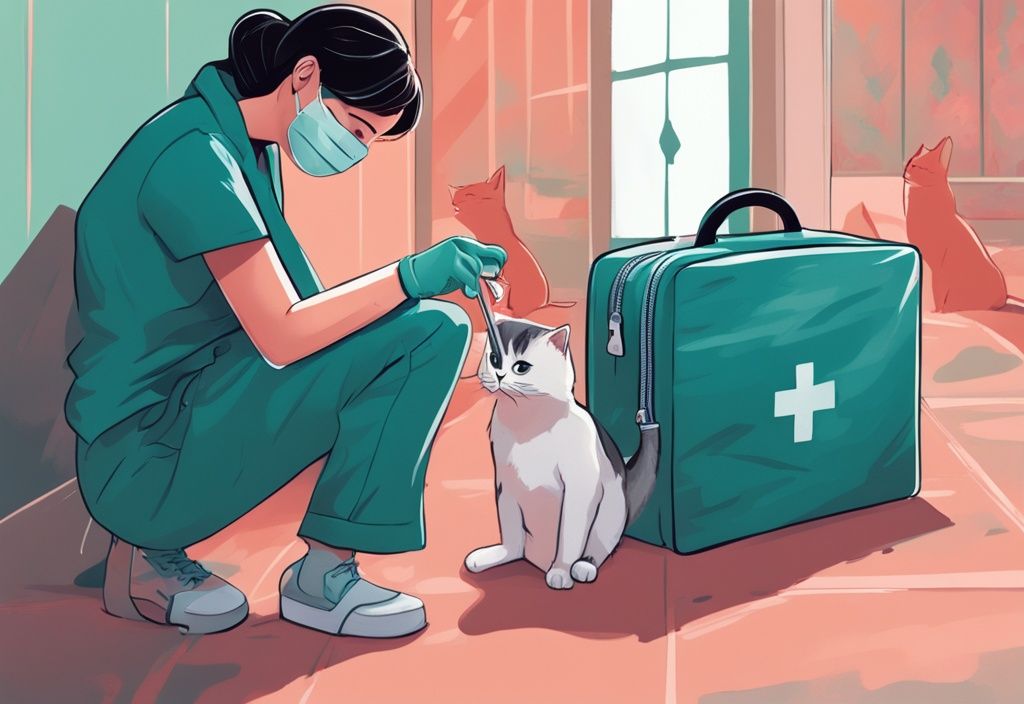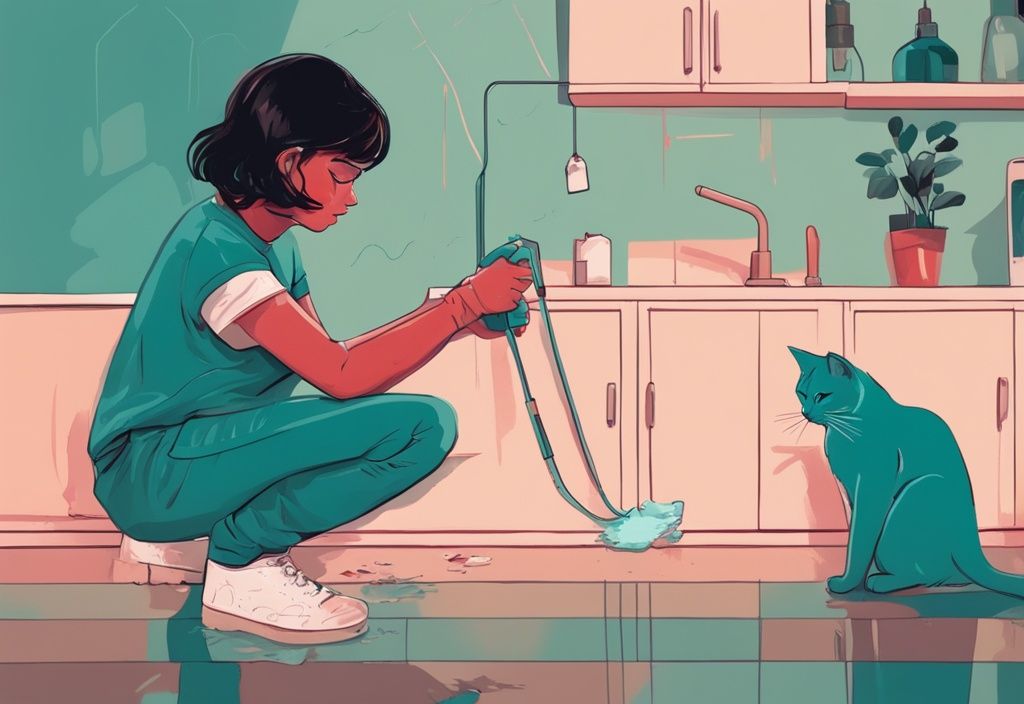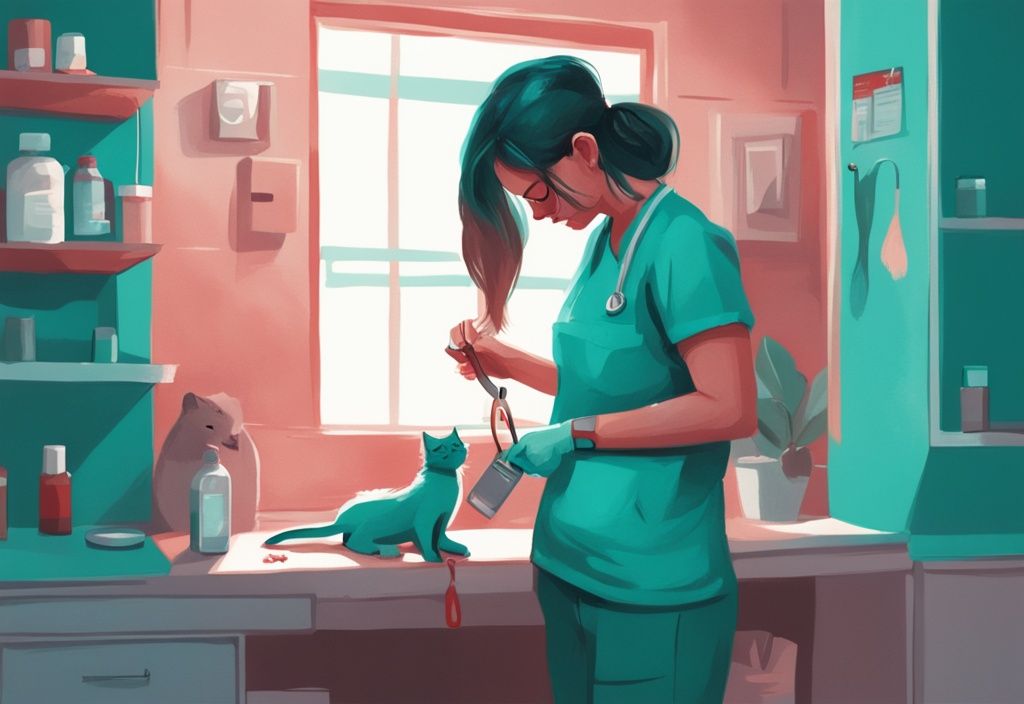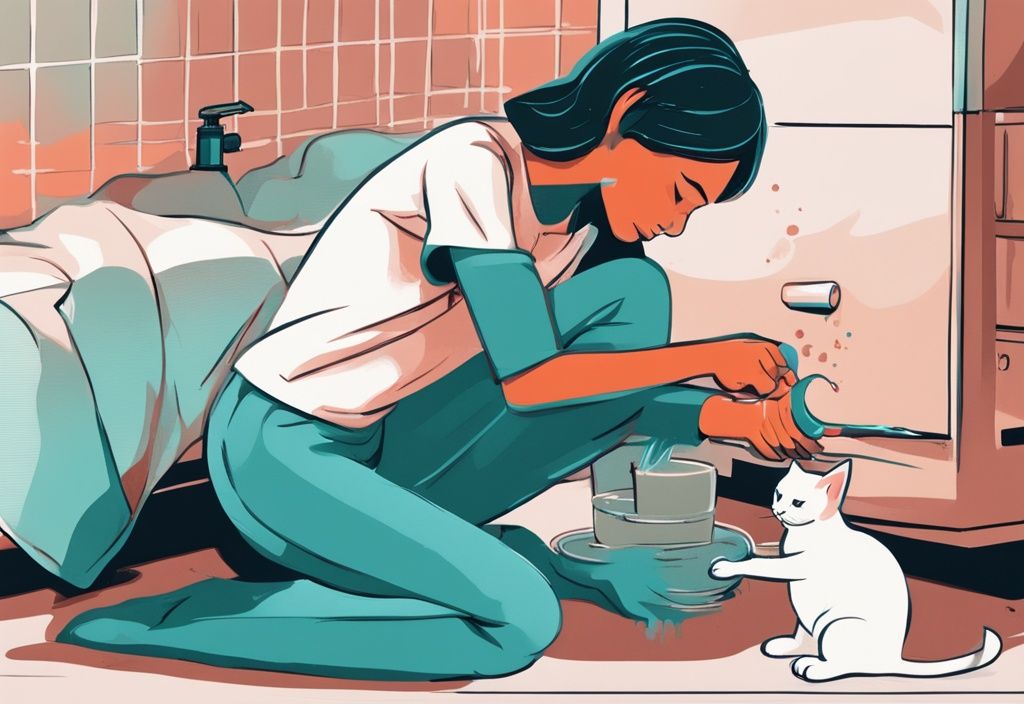Ever been on the receiving end of a feline’s fury? Trust me, it’s no picnic! Cat bites, whether they’re from a playful paw or a feisty feline, can pose serious health risks if not handled correctly. In this guide, you’ll learn the immediate steps to take when a cat bites you, preventing complications and ensuring your safety.
We’ll also delve into the signs of infection to look out for, and when it’s time to call in the professionals. But it’s not all doom and gloom! Understanding our furry friends’ behavior can help prevent these incidents in the future. So, ready to become a cat-bite guru? Let’s dive in and make sure you’re prepared for any feline encounter, keeping both you and Whiskers safe and happy.
Immediate Actions After a Cat Bite
When it comes to figuring out what to do when a cat bites you, quick and effective action is key. Let’s dive into some practical steps to ensure your wound heals without a hitch.
Cleaning the Wound
Picture this: you’re cuddling with your adorable furball, Whiskers, and suddenly—ouch! A nip on your hand. So, what to do when a cat bites you? First things first, roll up those sleeves and clean the wound thoroughly. Use warm water and mild soap, scrubbing gently for at least five minutes. It’s like giving your wound a little spa treatment, washing away the pesky bacteria. Oh, and don’t forget to wash your hands before and after, just like you would after playing fetch with Max, my Border Collie. If you’re feeling fancy, a mild salt solution can be a good alternative. Rinse well, but skip the strong disinfectants—they’re not as friendly as they sound.
Applying Antiseptics and Dressings
Next on the list of what to do when a cat bites you is playing doctor with some antiseptics and dressings. Grab an over-the-counter antiseptic or antibiotic cream and apply it to the bite. This is like giving your wound a protective shield against lingering bacteria. Cover it up with a dry sterile dressing or bandage to keep it clean and cozy. Remember, change it as often as you would change Whiskers’ litter box to maintain top-notch hygiene. And steer clear of tape or butterfly bandages—they’re like little bacteria traps!
Managing Bleeding and Swelling
Now, let’s talk about managing bleeding and swelling—because knowing what to do when a cat bites you means being prepared for everything. If the wound bleeds, grab a clean, soft cloth and press down firmly for up to five minutes. It’s like giving your wound a gentle hug to stop the bleeding. Keep the wound elevated above your heart, just like holding Whiskers up for a cuddle, to minimize swelling. These steps are crucial to ensure your wound heals like a champ, without any unwanted drama.
Recognizing When to Seek Medical Attention
When a cat decides to give you a little love nibble, it’s important to know when it’s time to call in the professionals. Let’s dive into the signs of infection and the importance of keeping up with vaccinations, so you can handle these situations like a pro.

Signs of Infection to Watch For
Oh, the joys of being a pet lover! But what to do when a cat bites you? Well, first things first, keep an eye on that bite. If it starts to throb like a bad dance beat, or if you notice swelling, redness, or warmth, it’s time to pay attention. And if pus makes an appearance, that’s your cue to act. Fever, headache, swollen glands, chills, or any flu-like symptoms? Those are your body’s way of waving a red flag. And let’s not forget, if moving a body part near the bite feels like trying to dance with two left feet, it’s definitely time to see a doctor.
Importance of Tetanus and Rabies Precautions
Now, onto the nitty-gritty of vaccinations. What to do when a cat bites you? Make sure your tetanus shot is up to date. If it’s been over five years, a quick chat with your doctor is in order. And if the cat is a stray or seems under the weather, don’t wait! Seek medical advice about rabies post-exposure prophylaxis (PEP). For those bites from your beloved pet cat, double-check their vaccination records. If anything seems off, a call to the vet is a good idea. Taking these steps can keep you and your furry friend safe and sound.
Reporting and Monitoring the Cat Bite Incident
When a cat decides to give you a little love nibble, it’s important to know what to do when a cat bites you. This section covers the essential steps to take, ensuring your safety and the well-being of our feline friends.
Documenting the Bite
First things first, grab your camera or phone and snap some pictures of that bite from every angle. Think of it as creating a mini photo shoot for your wound! This visual evidence can be a lifesaver if you need to address any legal or medical issues down the road. And while you’re at it, jot down some notes about the incident. When did it happen? Where were you? What were you doing when Whiskers decided to play vampire? These details can help doctors figure out the best way to treat you.
Contacting Authorities and Animal Control
Now, onto the next step in what to do when a cat bites you: reporting the incident. If the cat is a pet, it’s time to have a chat with the owner. It’s like letting them know their furball has a bit of a spicy side! This helps them take any necessary precautions to ensure their cat is in tip-top shape. But if the cat is a mysterious stray, it’s best to call in the experts. Contact local animal control or the public health department. They’re the pros at keeping an eye on stray cats and assessing any rabies risks.
And remember, if you’re trying to find the cat that bit you, safety comes first. Don’t try to catch the cat yourself—leave that to animal control. After all, we don’t want you starring in your own episode of “When Animals Attack!”
Preventing Future Cat Bites
Ever wondered why your furry feline friend might suddenly decide to give you a nip? Understanding cat behavior is key to preventing future cat bites and keeping your relationship with your kitty purr-fectly harmonious. Let’s dive into the world of whiskers and tails to uncover the secrets of feline communication.

Understanding Cat Behavior
Picture this: Whiskers, my cuddly rescue cat, is lounging on the windowsill, tail swishing like a metronome. Did you know that a swishing tail or flattened ears can be a cat’s way of saying, “I’m not in the mood”? Cats are masters of body language, and by learning to read these signals, you can avoid those unexpected bites. It’s like learning a new language, but instead of words, you’re interpreting tail flicks and ear twitches.
Respecting a cat’s personal space is crucial. Ever tried to sneak up on a cat? Not a good idea! Sudden movements can startle them, leading to defensive reactions. And if you have little ones at home, teaching them to handle cats gently is a must. Encourage gentle petting and explain that pulling tails or fur can lead to a less-than-pleasant encounter. By tuning into your cat’s mood, you can keep those teeth at bay.
Safe Interaction Tips with Cats
Now, let’s talk about safe interaction tips with our feline companions. Imagine approaching a cat like you’re meeting a new friend—slowly and respectfully. Let them come to you, and avoid disturbing them during their beauty sleep or mealtime. After all, who likes being interrupted during a nap or a meal?
Recognizing signs of fear or agitation is essential. If Whiskers starts hissing or puffing up like a fluffy balloon, it’s time to give her some space. Educating both kids and adults on these safe interaction practices can lead to a more peaceful coexistence with your cat. Remember, knowing what to do when a cat bites you starts with preventing the bite in the first place. With a little patience and understanding, you can create a purr-fectly harmonious home for you and your feline friend.
FAQs: Addressing Your Concerns about Cat Bites
Cat bites can be a bit of a surprise, right? Whether it’s from a stray or your own furry friend, knowing what to do is crucial. Let’s dive into some common questions and get those worries sorted out!
What should I do if the cat bite is from a stray cat?
Oh, those adventurous stray cats! If one decides to give you a little nip, it’s important to act fast. Head to the doctor right away to check if you need a rabies post-exposure prophylaxis (PEP). It’s better to be safe than sorry! And while you’re at it, give your local animal control a heads-up. They’re like the neighborhood watch for stray cats, helping to keep an eye on things.

How can I tell if a cat bite is infected?
Now, infections can be sneaky little things. Keep an eye out for signs like increased pain, swelling, or redness. If the area feels warm, or if you spot pus, fever, or red streaks, it’s time to see the doc. Think of it as a game of “spot the symptoms” – the sooner you catch them, the better!
Is it necessary to see a doctor for every cat bite?
Absolutely! Even if it’s just a tiny nip, seeing a doctor within eight hours is a smart move. Especially if the bite is deep or if your immune system isn’t in tip-top shape. Your doctor might clean the wound, apply some antibiotic cream, and maybe even give you a tetanus booster. It’s like giving your body a little extra armor!
What are the risks of not treating a cat bite promptly?
Ignoring a cat bite is like playing with fire – it can lead to serious infections from bacteria like staphylococcus, streptococcus, or pasteurella. Delaying treatment could mean a trip to the hospital, and nobody wants that! So, it’s best to tackle these bites head-on and keep those pesky infections at bay.
Conclusion
When pondering the question of what to do when a cat bit me, it’s essential to grasp the gravity of the situation. Cat bites can be more than just a nip—they’re potential invitations for nasty infections. These little feline teeth can introduce harmful bacteria into your body, leading to serious complications if not addressed swiftly. So, let’s dive into action!
First things first, let’s talk about first aid. Picture this: you’re on a mission to thwart those pesky germs. Start by gently cleaning the wound with warm water and mild soap for at least five minutes. It’s like giving your skin a spa day, minus the cucumber slices! Steer clear of harsh chemicals; we don’t want to add insult to injury. Once your wound is squeaky clean, apply an antiseptic or antibiotic cream to shoo away any lingering bacteria. Finally, cover it with a sterile bandage—think of it as a cozy blanket for your boo-boo.
Now, here’s where your inner detective comes into play: monitoring for infection. Keep an eye out for redness, swelling, warmth, or pus. If you notice any of these signs, or if you’re feeling feverish or chilled, it’s time to call in the pros. A healthcare professional can swoop in and save the day, ensuring any infection is nipped in the bud. For comforting words during tough times, check out these 40 dog passing quotes.
But wait, there’s more! Understanding cat behavior is your secret weapon for future bite prevention. By learning to spot signs of kitty agitation or fear, you can dodge potential bite scenarios. Educate yourself and others—especially the kiddos—on safe cat interactions. If you’re curious about cat behavior, you might wonder when it is too late to tame a feral cat. It’s like learning a new dance, where everyone stays in sync and bite-free.
In a nutshell, knowing what to do when a cat bit me is a mix of quick first aid, eagle-eyed monitoring, and a proactive approach to feline behavior. These steps not only tackle the immediate issue but also help in dodging similar situations down the road. So, let’s keep our furry friends happy and our fingers bite-free!
